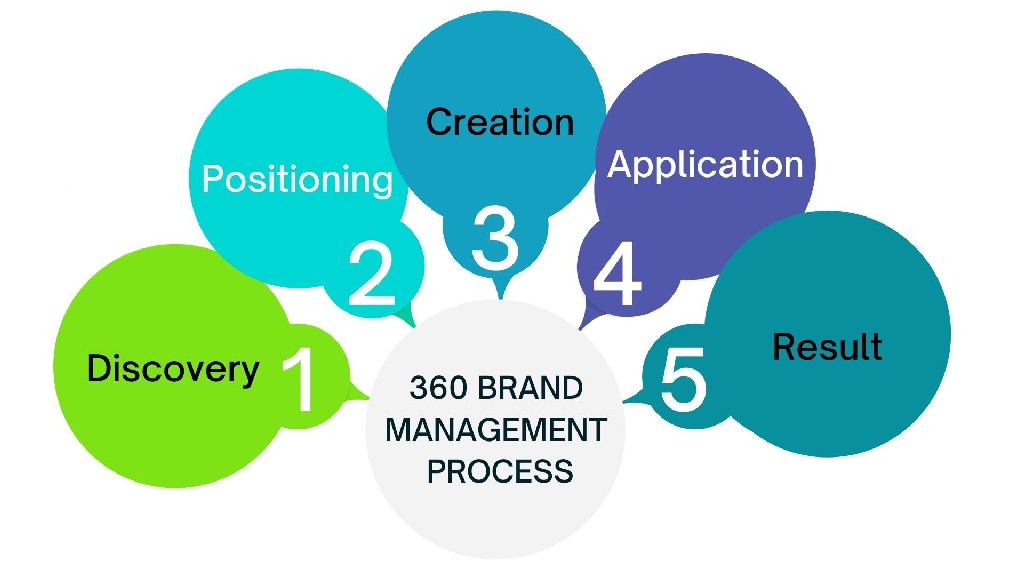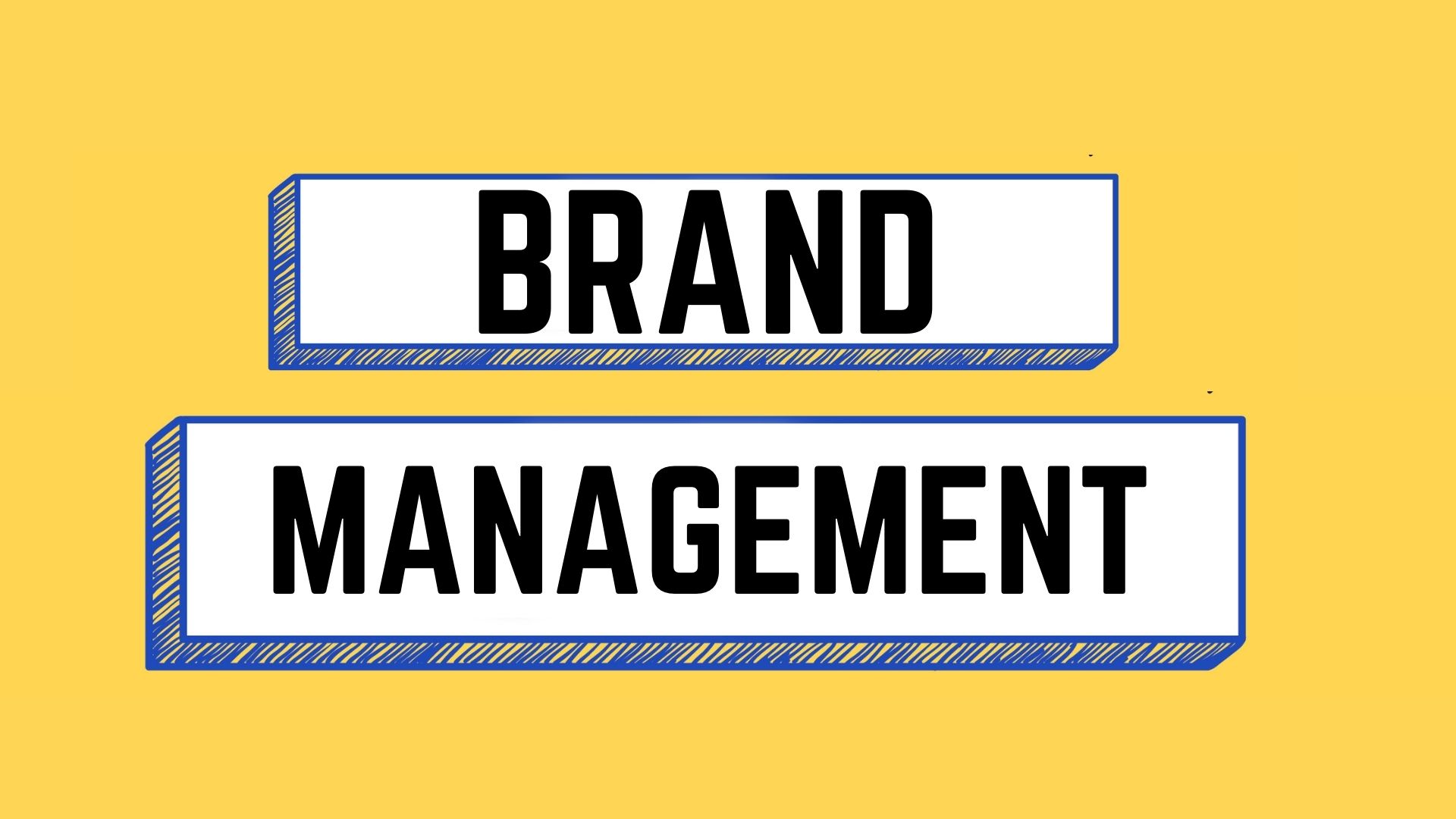Brand management is a process utilized for optimizing the perceived value of a brand, product, or service. The process of brand management starts with an analysis of how your brand is currently perceived in the target niche and then proceeds further in gauging how the brand or business should actually be perceived by the target audiences if it actives its business objectives.
With the help of an effective brand management process, a business can build a loyal customer base by using positive brand association that revolves around the processes associated with-
- Brand Name
- Brand Attributes
- Brand Positioning
- Brand Identity
- Sources of Brand Identity
- Brand Image
- Brand Identity vs Brand Image
- Brand Personality
- Brand Awareness
- Brand Loyalty
- Brand Association
- Building a Brand
- Brand Equity
- Brand Equity & Customer Equity
- Brand Extension
- Co-branding
Brand Management
Brand Management is a marketing function that involves techniques used to increase the perceived value of a product, product line, service, or brand with time. It includes managing both the intangible and tangible characteristics of a brand.
From establishing companies’ overall values to the deliverance of products to consumers, brand management covers it all. To carry out an effective brand management system, one needs to understand three core concepts, the brand, its overall values and goals, and its potential consumer market.
Importance Of Strategic Brand Management

Brand management doesn’t uphold a set of rules to follow for managing purposes. It guides the brand manager by clearing their concepts and encourages them to apply their understanding, experiences, and techniques to managing.
Brand management supports the manager in every aspect of a brand’s journey, from –
- Creating a brand identity for a new brand.
- Revival of an existing brand through re-positioning to
- Maintaining control over the existing brand.
Company’s Brand Management and Brand Equity
Brand equity is associated with the level of sway a brand name has in the minds of existing and potential consumers. According to Amber and Styles (1996), it is a store of profits that can be realized in the future.
It is the heart of the strategic brand management process. Strong brand equity is directly promotional to the buying decisions of the users as well as the market share and brand position that make the brand strong, sustainable, and performance-driven.
The brand equity concept has different meanings from the context of Accounts, Consumer, and Marketing. In accounting, equity is the total value of a brand as a separable asset, in a consumer-based context, it is the measure of consumers’ attachment to a brand while in the marketing context, brand equity is the description of consumer’s associations and beliefs about the brand
360 Brand Management Process

From controlling an existing brand to establishing a new brand identity, this ten-step and 5 phases process guide the managers through activities like brand awareness, brand identity, positioning, etc.
1st Phase: Discovery
Involves an internal and external audit, which lets managers gather knowledge regarding the values, current status, future goals of a brand.
Step 1: Knowledge
It encompasses all the information that is important for brand management. In this step, managers need to accumulate knowledge about certain aspects of a brand, which are –
- Brand Vision
- Niche Market
- Touchpoints
- Products
- Services
- Culture
Step 2: Insight
This step encourages the managers to learn all about the business strategies and approaches. Learn about the ongoing sales and marketing strategies and the business strategies of competitors, etc.
Points that are included in this step for guiding managers are –
- Business Plan
- Sales And Marketing
- GTM Strategy Or Go-To-Market Strategy
- Customers
- Competitors
2nd Phase: Positioning
Positioning is all about marketing a brand so that it gets positioned in the minds of customers, along with some associated values and differentiation.
According to this phase, managers focus more on their journey and their interaction with the brand. And to better the customer’s journey and interaction, managers indulge in analyzing the knowledge gathered in the discovery phase.
Step 3: Analyse
Managers indulge in analyzing business performances, brand values perceived by customers, brand awareness, and elements obstructing the customers from making a purchase. Points, which are analyzed in this step are mentioned below-
- Online Metrics
- Awareness
- Familiarity
- Consideration
Step 4: Define
In this step, managers indulge in defining unique attributes, values, strategies, and brand approaches. From defining brand values to attributes differentiating the brand, every aspect of the brand is defined in this step.
- Brand Values
- Brand Pillars
- Key Differentiators
- Positioning Statement
3rd Phase: Creation
After developing strategies related to the brand’s positioning, managers engage in developing attributes of the brand.
Step 5: Prepare
Establish a brand’s attributes, personality, contents, and all other aspects that add up to form the essence of a brand Like,
- Attributes
- Brand Essence
- Personality
- Content Strategy
Step 6: Create
And finally, managers start with the creation process, which involves developing trademarks, establishing a suitable brand name and messages. So it involves the creation of –
- Brand Name
- Messaging
- Tone Of Voice
- Trademarks
4th Phase: Application
With the completion of creation comes the need for the application. Once everything has been established, this phase focuses on developing marketing slogans, promotions, campaigns, communication, etc.
Step 7: Design
From deciding on a logo’s designs to a selection of colour palettes, everything is determined by managers in this step.
- Logo & Tagline
- Graphic Style
- Colour Palette
- Guidelines
Step 8: Produce
Everything related to marketing production operations like forming promotional campaign strategies, deciding on promotional channels, and producing the app gets developed in this step.
- Promotions
- Campaigns & Slogans
- Media Mix
- Apps
5th Phase: Result
Finally, the managers will have to evaluate the results. Still, before, application and evaluation of those campaigns, promotional activities, managers need to go through all the strategies and approaches to make sure that everything is in line with the values, plan, and strategies of the business.
Step 9: Roll Out
All the promotional strategies are put to use by the managers. These activities include,
- Advertising & Publicity
- Web and e-commerce
- Email Marketing
- Social Media
Step 10: Monitor
And the last step involves keeping an eye out for any discrepancy or mistake and keeping the bran’s operations on track.
- Association
- Experience
- Purchasing
- Loyalty
- Track and Adjust
Conclusion
Brand managers can put their techniques and strategies and the brand management concept to conduct efficient managing of the brand’s activities.
It covers all the aspects of tangible and intangible characteristics and core values of a brand or company starting from brand name and brand attributes to brand recognition, positioning, personality, image, and brand extension.
All in all, successful brand management increases the opportunities for brands to achieve success and accomplish their objectives.
What according to you are the most important characteristics of effective brand management? Share your views with us in the comment section below.
Pinky is an MBA in Marketing from the University of Mumbai. She loves helping people out in learning Marketing and sharing latest ideas and tactics for growing businesses.
